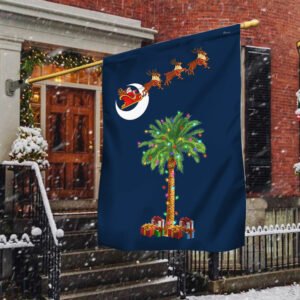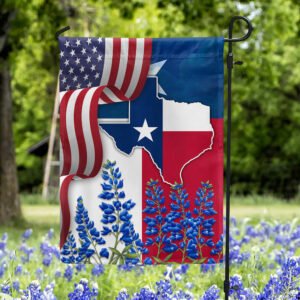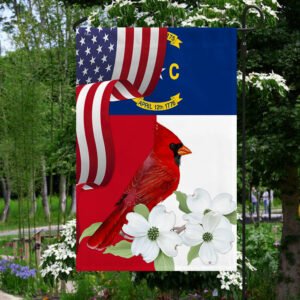United States Flag
Showing 1–16 of 668 results

South Carolina Yellow Jessamine Flower and Carolina Wren Bird Flag MLN1141F
Welcome to our comprehensive exploration of the 51 state flags of the United States! Each state flag tells a unique story, representing the rich history, culture, and identity of its respective state. Join us on this journey as we uncover the symbolism and significance behind these iconic symbols of American pride.
Alabama: The Heart of Dixie
Alabama’s state flag features a simple design—a crimson St. Andrew’s cross on a field of white. This striking emblem represents the courage and valor of Alabama’s residents throughout history. Adopted on February 16, 1895, the flag serves as a powerful reminder of the state’s enduring spirit and heritage.
Alaska: The Last Frontier
Designed by a young student, Alaska’s flag depicts the northern night sky with the iconic Big Dipper constellation and the North Star. Symbolizing the state’s natural beauty and solitude, this flag captures the essence of the Last Frontier. Its adoption on July 6, 1927, marked a milestone in Alaska’s journey toward statehood.
Arizona: The Grand Canyon State
Arizona’s state flag is a vibrant tribute to the natural wonders of the Grand Canyon State. Designed by Colonel Charles W. Harris and adopted on February 17, 1917, the flag features bold rays of red and yellow radiating from a copper star set against a field of blue. The colors echo the hues of Arizona’s breathtaking sunsets, while the copper star pays homage to the state’s rich mineral resources and copper mining heritage. The 13 red and gold rays symbolize the original Thirteen Colonies, reaffirming Arizona’s place in the tapestry of American history.
Arkansas: The Natural State
Arkansas’s state flag reflects the state’s abundant natural beauty and diverse landscapes. Adopted on February 26, 1913, the flag features a diamond shape filled with a blue field, symbolizing Arkansas’s status as the only diamond-producing state in the U.S. The diamond is bordered by 25 white stars, representing Arkansas’s admission as the 25th state in the Union. A band of three blue stars on the flag’s lower half represents the three nations—France, Spain, and the United States—that have governed Arkansas throughout its history.
California: The Golden State
California’s state flag is a timeless emblem of the state’s rich history and boundless opportunities. Adopted on February 3, 1911, the flag features a single red star set against a field of deep blue, symbolizing California’s pioneering spirit and revolutionary ideals. The lone star pays homage to the state’s independent streak, while the vibrant colors evoke the golden sunsets and fertile landscapes that have long defined the Golden State. With its bold design and iconic symbolism, the California flag serves as a beacon of hope and prosperity for all who call the state home.
Colorado: The Centennial State
Colorado’s state flag is a bold tribute to the state’s majestic mountains and pioneering spirit. Adopted on June 5, 1911, the flag features a vibrant blue field with a large golden disk at its center, symbolizing Colorado’s abundant sunshine and natural resources. Centered within the disk is a stylized depiction of a red C, representing Colorado’s unique identity and sense of pride. Encircling the C are white and gold lines, symbolizing the state’s snow-capped peaks and rich mineral wealth. With its striking design and powerful symbolism, the Colorado flag embodies the spirit of the Centennial State and its people.
Connecticut: The Constitution State
Connecticut’s state flag is a timeless symbol of the state’s rich history and commitment to freedom and democracy. Adopted in 1897, the flag features a field of azure blue with a white shield emblazoned at its center. Within the shield is a gold-colored banner with the Latin motto “Qui Transtulit Sustinet,” meaning “He Who Transplanted Still Sustains.” This motto pays tribute to Connecticut’s colonial roots and resilience in the face of adversity. Surrounding the shield are three grapevines, representing the state’s agricultural heritage and the principles of liberty, prosperity, and peace. With its elegant design and profound symbolism, the Connecticut flag serves as a powerful reminder of the state’s enduring legacy and commitment to democratic ideals.
Delaware: The First State
Delaware’s state flag is a proud testament to its historic legacy as the first state to ratify the United States Constitution. Adopted on July 24, 1913, the flag features a field of colonial blue adorned with a golden diamond shape at its center. Within the diamond is the state’s official coat of arms, depicting a heraldic shield adorned with a wreath of olive branches and a banner bearing the Latin motto “Liberty and Independence.” Above the shield sits a sailing ship representing Delaware’s maritime heritage and role in American commerce. Below the shield, a cornucopia symbolizes the state’s agricultural abundance and prosperity. With its rich symbolism and elegant design, the Delaware flag serves as a proud symbol of the state’s historic significance and enduring commitment to liberty and independence.
Florida: The Sunshine State
Florida’s state flag is a vibrant celebration of its tropical climate, natural beauty, and vibrant culture. Adopted on November 6, 1900, the flag features a bold field of red emblazoned with a white silhouette of the state’s seal. Centered within the seal is a Seminole woman spreading hibiscus flowers, symbolizing Florida’s Native American heritage and lush flora. In the background, a sun rises over a body of water, representing the state’s nickname, “The Sunshine State,” and its expansive coastline. Surrounding the seal are branches of sabal palmetto, Florida’s state tree, and a ribbon bearing the state motto, “In God We Trust.” With its dynamic imagery and vibrant colors, the Florida flag captures the essence of the Sunshine State and its unique blend of natural beauty and cultural diversity.
Georgia: The Peach State
Georgia’s state flag is a proud emblem of its rich history, agricultural heritage, and Southern hospitality. Adopted on May 8, 2003, the flag features a bold field of deep blue adorned with the state’s official seal in the center. The seal depicts three pillars representing the state’s motto, “Wisdom, Justice, and Moderation,” flanked by two figures—an archetypal farmer and a sailor—symbolizing Georgia’s diverse economy and maritime heritage. Above the seal flies a banner with the state motto, “In God We Trust,” while below it, a banner bears the state’s name, “Georgia.” Surrounding the seal are 13 white stars, representing Georgia’s place as one of the original Thirteen Colonies. With its elegant design and rich symbolism, the Georgia flag embodies the spirit of the Peach State and its commitment to tradition, integrity, and progress.
Hawaii: The Aloha State
Hawaii’s state flag is a vibrant symbol of its unique culture, natural beauty, and aloha spirit. Adopted on December 29, 1845, the flag features a field of deep blue adorned with the Union Jack in the upper left corner—a nod to Hawaii’s historical ties to Great Britain. Centered within the field is the state’s official coat of arms, depicting a heraldic shield adorned with eight alternating red, white, and blue stripes representing the eight main islands of Hawaii. Above the shield sits a golden crown representing the monarchy, while below it, a banner bears the state motto, “Ua Mau ke Ea o ka ʻĀina i ka Pono,” meaning “The life of the land is perpetuated in righteousness.” With its vibrant colors and rich symbolism, the Hawaii flag captures the essence of the Aloha State and its enduring spirit of unity, harmony, and aloha.
Idaho: The Gem State
Idaho’s state flag is a proud symbol of its natural beauty, abundant resources, and pioneering spirit. Adopted on March 12, 1907, the flag features a bold field of blue adorned with the state’s official seal in the center. The seal depicts a majestic mountain landscape with a river flowing through it, symbolizing Idaho’s rugged terrain and fertile valleys. In the foreground, a miner wields a pickaxe, representing the state’s rich mineral wealth and history of mining. To the left of the miner stands a woman holding scales of justice, symbolizing equality and fairness under the law. Surrounding the seal are the words “State of Idaho” and the state motto, “Esto perpetua,” meaning “Let it be perpetual.” With its dynamic imagery and rich symbolism, the Idaho flag embodies the spirit of the Gem State and its commitment to prosperity, equality, and freedom.
Illinois: The Prairie State
Illinois’ state flag is a proud symbol of its rich history, natural beauty, and vibrant culture. Adopted on July 6, 1915, the flag features a field of azure blue adorned with the state’s official seal in the center. The seal depicts a bald eagle perched atop a rock, clutching a shield in its talons. The shield bears 13 alternating red and white stripes representing the original Thirteen Colonies, while a blue field above the stripes symbolizes the Union. In the eagle’s beak, a banner bears the state motto, “State Sovereignty, National Union.” To the left of the eagle, a shield emblazoned with the Illinois state emblem—a sun rising over a prairie landscape—represents the state’s agricultural heritage and natural beauty. With its elegant design and rich symbolism, the Illinois flag embodies the spirit of the Prairie State and its proud tradition of independence, unity, and progress.
Indiana: The Hoosier State
Indiana’s state flag is a bold symbol of its rich history, pioneering spirit, and commitment to progress. Adopted on May 31, 1917, the flag features a field of azure blue adorned with a golden torch in the center. The torch represents enlightenment and progress, symbolizing Indiana’s role as a beacon of hope and innovation. Encircling the torch are 13 gold stars, representing the original Thirteen Colonies and Indiana’s place in the Union. Below the torch, a banner bears the state motto, “The Crossroads of America,” reflecting Indiana’s central location and importance as a transportation hub. With its dynamic imagery and powerful symbolism, the Indiana flag captures the essence of the Hoosier State and its proud tradition of resilience, ingenuity, and opportunity.
Iowa: The Hawkeye State
Iowa’s state flag is a proud symbol of its agricultural heritage, natural beauty, and Midwestern values. Adopted on March 29, 1921, the flag features a vertical tricolor of blue, white, and red. The blue stripe represents loyalty and justice, while the white stripe symbolizes purity and unity. The red stripe symbolizes courage and sacrifice, paying homage to Iowa’s role in defending the Union during the Civil War. Centered within the flag is a bald eagle carrying a ribbon with the state motto, “Our Liberties We Prize and Our Rights We Will Maintain.” Below the eagle, a ribbon bears the state name, “Iowa,” in bold letters. With its simple yet powerful design, the Iowa flag embodies the spirit of the Hawkeye State and its proud tradition of freedom, democracy, and community.
Kansas: The Sunflower State
Kansas’ state flag is a vibrant symbol of its natural beauty, agricultural bounty, and pioneering spirit. Adopted on September 24, 1927, the flag features a field of azure blue adorned with the state seal in the center. The seal depicts a sunrise over a river and a steamboat sailing on the water, symbolizing Kansas’ central location and role as a transportation hub. In the foreground, a sunflower blooms, representing the state flower and Kansas’ nickname, “The Sunflower State.” Above the seal, a banner bears the state motto, “Ad Astra per Aspera,” meaning “To the stars through difficulties,” reflecting Kansas’ resilience and determination in the face of challenges. With its dynamic imagery and rich symbolism, the Kansas flag captures the essence of the Sunflower State and its proud tradition of perseverance, opportunity, and community.
Kentucky: The Bluegrass State
Kentucky’s state flag is a proud symbol of its rich history, horse racing tradition, and natural beauty. Adopted on March 26, 1918, the flag features a field of azure blue adorned with the state seal in the center. The seal depicts two men—a frontiersman and a statesman—embracing, symbolizing the unity of Kentucky’s people and their commitment to progress. Behind them, a pioneer cabin and a sheaf of wheat represent Kentucky’s agricultural heritage and fertile land. Above the seal, a golden banner bears the state motto, “United we stand, divided we fall,” reflecting Kentucky’s resilience and spirit of unity. With its elegant design and rich symbolism, the Kentucky flag embodies the essence of the Bluegrass State and its proud tradition of independence, hospitality, and community.
Louisiana: The Pelican State
Louisiana’s state flag is a proud symbol of its unique culture, vibrant history, and diverse heritage. Adopted in 1912, the flag features a field of azure blue adorned with a heraldic shield in the center. The shield depicts a mother pelican feeding her young with her own blood, symbolizing sacrifice and maternal love. Above the shield, a banner bears the state motto, “Union, Justice, and Confidence,” reflecting Louisiana’s commitment to unity, fairness, and trust. Surrounding the shield are symbols of Louisiana’s heritage, including the state bird, the pelican, and a ribbon with the state motto. With its dynamic imagery and rich symbolism, the Louisiana flag captures the essence of the Pelican State and its proud tradition of resilience, diversity, and cultural richness.
Maine: The Pine Tree State
Maine’s state flag is a proud symbol of its natural beauty, maritime heritage, and independent spirit. Adopted on June 16, 1909, the flag features a field of azure blue adorned with the state coat of arms in the center. The coat of arms depicts a shield adorned with a pine tree, a symbol of Maine’s forests and natural resources. Above the shield sits a moose—the state animal—while below it, a banner bears the state motto, “Dirigo,” meaning “I direct” or “I lead.” Surrounding the shield are symbols of Maine’s maritime heritage, including a farmer and sailor, representing the state’s agricultural and maritime industries. With its bold design and rich symbolism, the Maine flag embodies the spirit of the Pine Tree State and its proud tradition of independence, resilience, and natural beauty.
Maryland: The Old Line State
Maryland’s state flag is a proud symbol of its rich history, diverse culture, and spirit of independence. Adopted on March 9, 1904, the flag features a bold design of alternating quadrants of black and gold with a unique design known as the “Crossland Banner” in the upper left corner. The Crossland Banner features a combination of the coats of arms of the Calvert and Crossland families, representing the founding families of Maryland. The red and white crosses symbolize the Crossland family, while the black and gold quarters represent the Calvert family. With its distinctive design and rich symbolism, the Maryland flag captures the essence of the Old Line State and its proud tradition of independence, unity, and diversity.
Massachusetts: The Bay State
Massachusetts’ state flag is a proud symbol of its rich history, revolutionary spirit, and commitment to freedom and democracy. Adopted on March 21, 1971, the flag features a field of azure blue adorned with the state coat of arms in the center. The coat of arms depicts a Native American holding a bow and arrow, representing the indigenous peoples of Massachusetts and their contributions to the state’s history. Above the Native American’s head sits a gold star representing Massachusetts’ place as one of the original Thirteen Colonies. Below the Native American, a blue ribbon bears the state motto, “Ense petit placidam sub libertate quietem,” meaning “By the sword we seek peace, but peace only under liberty.” Surrounding the coat of arms are symbols of Massachusetts’ maritime heritage, including a colonial-era ship and a white star representing the state’s role in the American Revolution. With its bold design and rich symbolism, the Massachusetts flag embodies the spirit of the Bay State and its proud tradition of freedom, democracy, and independence.
Michigan: The Great Lakes State
Michigan’s state flag is a proud symbol of its natural beauty, abundant resources, and pioneering spirit. Adopted on June 26, 1911, the flag features a field of azure blue adorned with the state coat of arms in the center. The coat of arms depicts an elk and a moose supporting a shield adorned with a depiction of a rising sun over a lake and a peninsula. Above the shield sits an eagle, representing the United States, while below it, a banner bears the state motto, “Si quaeris peninsulam amoenam, circumspice,” meaning “If you seek a pleasant peninsula, look about you.” Surrounding the coat of arms are symbols of Michigan’s natural beauty and resources, including a man with a gun and a woman with a sickle, representing Michigan’s hunting and agricultural industries. With its dynamic imagery and rich symbolism, the Michigan flag embodies the spirit of the Great Lakes State and its proud tradition of innovation, resilience, and natural beauty.
Minnesota: The North Star State
Minnesota’s state flag is a proud symbol of its natural beauty, pioneer spirit, and commitment to progress. Adopted on August 2, 1957, the flag features a field of medium blue adorned with the state coat of arms in the center. The coat of arms depicts a farmer plowing a field and a Native American riding on horseback, symbolizing Minnesota’s agricultural and indigenous heritage. Above the coat of arms sits a golden five-pointed star representing the North Star, a symbol of guidance and inspiration. Surrounding the coat of arms are symbols of Minnesota’s natural resources, including a pine tree, a red banner with the state motto, “L’Étoile du Nord,” meaning “The Star of the North,” and a banner with the state name, “Minnesota.” With its bold design and rich symbolism, the Minnesota flag embodies the spirit of the North Star State and its proud tradition of innovation, diversity, and progress.
Mississippi: The Magnolia State
Mississippi’s state flag is a proud symbol of its rich history, southern heritage, and natural beauty. Adopted on April 23, 1894, the flag features a field of deep blue adorned with a battle flag from the American Civil War in the upper left corner. The battle flag, often referred to as the “St. Andrew’s Cross,” is a symbol of Mississippi’s Confederate heritage and its role in the Civil War. The rest of the flag is adorned with a circle of 20 white stars representing Mississippi’s place as the 20th state to join the Union. Surrounding the stars are 13 alternating red and white stripes representing the original Thirteen Colonies. With its bold design and rich symbolism, the Mississippi flag embodies the spirit of the Magnolia State and its proud tradition of independence, resilience, and southern hospitality.
Missouri: The Show-Me State
Missouri’s state flag is a proud symbol of its rich history, diverse culture, and pioneering spirit. Adopted on March 22, 1913, the flag features a field of three horizontal stripes—red, white, and blue. In the center of the flag is the Missouri state seal, which depicts a grizzly bear and a silver crescent moon representing the state’s nickname, “The Show-Me State.” Surrounding the seal are 24 white stars representing Missouri’s place as the 24th state to join the Union. Above the seal, a banner bears the state motto, “Salus populi suprema lex esto,” meaning “Let the welfare of the people be the supreme law.” With its bold design and rich symbolism, the Missouri flag embodies the spirit of the Show-Me State and its proud tradition of independence, innovation, and progress.
Montana: The Treasure State
Montana’s state flag is a proud symbol of its natural beauty, rugged wilderness, and pioneering spirit. Adopted on March 1, 1905, the flag features a field of azure blue adorned with the state coat of arms in the center. The coat of arms depicts a golden eagle clutching a ribbon with the state motto, “Oro y plata,” meaning “Gold and silver” in Spanish. Surrounding the eagle are symbols of Montana’s abundant natural resources, including a pickaxe, a shovel, and a plow. Above the coat of arms sits a banner with the state name, “Montana,” while below it, a banner bears the state motto. With its dynamic imagery and rich symbolism, the Montana flag embodies the spirit of the Treasure State and its proud tradition of independence, resourcefulness, and natural beauty.
Nebraska: The Cornhusker State
Nebraska’s state flag is a proud symbol of its agricultural heritage, Midwestern values, and pioneering spirit. Adopted on March 28, 1925, the flag features a field of azure blue adorned with the state seal in the center. The seal depicts a golden eagle perched atop a shield adorned with a steamboat sailing on a river, representing Nebraska’s role as a gateway to the West and its rich history of transportation and commerce. In the background, a train races across the landscape, symbolizing Nebraska’s vital railroad industry and spirit of progress. Above the seal, a banner bears the state motto, “Equality Before the Law,” reflecting Nebraska’s commitment to justice and fairness. Surrounding the seal are symbols of Nebraska’s natural beauty and resources, including a settler’s cabin, a wheat sheaf, and the state flower, the goldenrod. With its dynamic imagery and rich symbolism, the Nebraska flag embodies the spirit of the Cornhusker State and its proud tradition of independence, resilience, and community.
Nevada: The Silver State
Nevada’s state flag is a proud symbol of its rich history, natural resources, and spirit of independence. Adopted on March 26, 1929, the flag features a field of cobalt blue adorned with the state emblem in the upper left corner. The emblem depicts a silver star surrounded by the words “Silver State” and a sprig of sagebrush, Nevada’s state flower. The silver star symbolizes Nevada’s nickname, “The Silver State,” and its historic importance as a major silver mining center. The sprig of sagebrush represents Nevada’s rugged landscape and native flora, while the blue field symbolizes the clear skies and open spaces of the American West. With its bold design and rich symbolism, the Nevada flag embodies the spirit of the Silver State and its proud tradition of resourcefulness, resilience, and innovation.
New Hampshire: The Granite State
New Hampshire’s state flag is a proud symbol of its rugged landscape, revolutionary heritage, and spirit of independence. Adopted on March 24, 1909, the flag features a field of azure blue adorned with the state seal in the center. The seal depicts a rising sun over a mountain range, symbolizing New Hampshire’s nickname, “The Granite State,” and its majestic natural beauty. Above the seal, a banner bears the state motto, “Live Free or Die,” reflecting New Hampshire’s proud tradition of liberty and self-governance. Surrounding the seal are symbols of New Hampshire’s agricultural and industrial heritage, including a farmer and a ship under construction. With its bold design and rich symbolism, the New Hampshire flag embodies the spirit of the Granite State and its proud tradition of independence, resilience, and freedom.
New Jersey: The Garden State
New Jersey’s state flag is a proud symbol of its rich history, diverse culture, and vibrant economy. Adopted on March 26, 1896, the flag features a field of buff adorned with the state coat of arms in the center. The coat of arms depicts a shield adorned with three plows, representing New Jersey’s agricultural heritage and fertile farmland. Above the shield sits a horse’s head representing speed and strength, while below it, a banner bears the state motto, “Liberty and Prosperity.” Surrounding the shield are symbols of New Jersey’s maritime heritage, including a helmet representing the state’s role in defense and a sailing ship representing commerce and trade. With its dynamic imagery and rich symbolism, the New Jersey flag embodies the spirit of the Garden State and its proud tradition of innovation, diversity, and prosperity.
New Mexico: The Land of Enchantment
New Mexico’s state flag is a vibrant symbol of its rich cultural heritage, natural beauty, and spirit of independence. Adopted on March 15, 1925, the flag features a field of bright yellow adorned with a red sun symbol in the center. The red sun symbolizes the state’s Native American and Spanish roots, representing the land of enchantment and the warmth of New Mexico’s people. In the center of the sun symbol sits the Zia symbol, a sacred symbol of the Zia Pueblo tribe representing the four directions, the four seasons, the four times of day, and the four stages of life. With its bold design and rich symbolism, the New Mexico flag captures the essence of the Land of Enchantment and its proud tradition of diversity, culture, and spirituality.
New York: The Empire State
New York’s state flag is a proud symbol of its rich history, diverse culture, and spirit of innovation. Adopted on April 2, 1901, the flag features a field of deep blue adorned with the state coat of arms in the center. The coat of arms depicts a shield adorned with a sailing ship representing New York’s maritime heritage and role in commerce. Above the shield sits a golden eagle representing strength and freedom, while below it, a banner bears the state motto, “Excelsior,” meaning “Ever upward.” Surrounding the shield are symbols of New York’s natural resources and agricultural abundance, including a cornucopia overflowing with fruits and vegetables. With its dynamic imagery and rich symbolism, the New York flag embodies the spirit of the Empire State and its proud tradition of leadership, innovation, and progress.
North Carolina: The Tar Heel State
North Carolina’s state flag is a proud symbol of its rich history, resilience, and pioneering spirit. Adopted on June 22, 1861, the flag features a field of azure blue adorned with a white star at its center and a horizontal bar of white and red stripes along the fly. The white star represents North Carolina’s place as one of the original Thirteen Colonies and its pride in being the first colony to declare independence from Great Britain. The red and white stripes symbolize the bloodshed and sacrifice of North Carolinians in defense of freedom and independence. With its bold design and rich symbolism, the North Carolina flag embodies the spirit of the Tar Heel State and its proud tradition of courage, independence, and resilience.
North Dakota: The Peace Garden State
North Dakota’s state flag is a proud symbol of its natural beauty, agricultural heritage, and spirit of peace and cooperation. Adopted on March 3, 1911, the flag features a field of azure blue adorned with a bald eagle holding an olive branch and arrows in its talons. The olive branch represents peace, while the arrows symbolize strength and readiness to defend freedom and democracy. Above the eagle sits a banner with the state motto, “Liberty and Union, Now and Forever, One and Inseparable,” reflecting North Dakota’s commitment to unity and cooperation. Surrounding the eagle are symbols of North Dakota’s natural resources and agricultural abundance, including a sheaf of wheat and a field of green. With its dynamic imagery and rich symbolism, the North Dakota flag embodies the spirit of the Peace Garden State and its proud tradition of peace, prosperity, and unity.
Ohio: The Buckeye State
Ohio’s state flag is a proud symbol of its rich history, diverse culture, and spirit of innovation. Adopted on May 9, 1902, the flag features a field of deep blue adorned with the state coat of arms in the center. The coat of arms depicts a golden circle surrounded by 17 stars representing Ohio’s place as the 17th state to join the Union. Within the circle sits a depiction of the sun rising over a mountain, symbolizing Ohio’s birth as a new state and its promise of a bright future. Above the circle, a banner bears the state motto, “With God, all things are possible,” reflecting Ohio’s faith and determination. Surrounding the coat of arms are symbols of Ohio’s natural resources and industrial heritage, including a sheaf of wheat, a bundle of arrows, and a gear wheel. With its bold design and rich symbolism, the Ohio flag embodies the spirit of the Buckeye State and its proud tradition of progress, diversity, and opportunity.
Oklahoma: The Sooner State
Oklahoma’s state flag is a proud symbol of its rich history, diverse culture, and pioneering spirit. Adopted on April 2, 1925, the flag features a field of azure blue adorned with the state emblem in the center. The emblem depicts an Osage warrior’s circular buckskin shield adorned with seven eagle feathers representing the seven traditional Osage clans. In the center of the shield sits a calumet or peace pipe, symbolizing unity and peace among Oklahoma’s diverse peoples. Surrounding the shield are symbols of Oklahoma’s natural resources and agricultural abundance, including a ceremonial pipe, a peace pipe, and a sheaf of wheat. With its dynamic imagery and rich symbolism, the Oklahoma flag embodies the spirit of the Sooner State and its proud tradition of resilience, diversity, and unity.
Oregon: The Beaver State
Oregon’s state flag is a proud symbol of its natural beauty, pioneering spirit, and commitment to progress. Adopted on February 26, 1925, the flag features a field of azure blue adorned with the state coat of arms in the center. The coat of arms depicts a golden shield adorned with an elk and a beaver, representing Oregon’s abundant wildlife and natural resources. Above the shield sits a golden banner with the state motto, “Alis volat propriis,” meaning “She flies with her own wings,” reflecting Oregon’s independent spirit and determination. Surrounding the shield are symbols of Oregon’s agricultural and industrial heritage, including a sheaf of wheat and a pickaxe. With its bold design and rich symbolism, the Oregon flag embodies the spirit of the Beaver State and its proud tradition of innovation, resilience, and natural beauty.
Pennsylvania: The Keystone State
Pennsylvania’s state flag is a proud symbol of its rich history, diverse culture, and spirit of independence. Adopted on April 24, 1907, the flag features a field of deep blue adorned with the state coat of arms in the center. The coat of arms depicts a shield adorned with images representing Pennsylvania’s diverse industries, including a ship representing commerce, a plow representing agriculture, and three golden sheaves of wheat representing abundance. Above the shield sits a bald eagle representing strength and freedom, while below it, a banner bears the state motto, “Virtue, Liberty, and Independence.” Surrounding the coat of arms are symbols of Pennsylvania’s natural resources and industrial heritage, including a cornucopia overflowing with fruits and vegetables and a blacksmith’s anvil and hammer. With its dynamic imagery and rich symbolism, the Pennsylvania flag embodies the spirit of the Keystone State and its proud tradition of independence, resilience, and progress.
Rhode Island: The Ocean State
Rhode Island’s state flag is a proud symbol of its maritime heritage, natural beauty, and spirit of independence. Adopted on May 19, 1897, the flag features a field of white adorned with a gold anchor surrounded by 13 gold stars representing the original Thirteen Colonies. Below the anchor sits a blue ribbon bearing the state motto, “Hope,” reflecting Rhode Island’s proud tradition of hope, opportunity, and freedom. Surrounding the anchor are symbols of Rhode Island’s maritime heritage, including waves representing the ocean and a rope representing navigation and commerce. With its simple yet powerful design, the Rhode Island flag embodies the spirit of the Ocean State and its proud tradition of independence, resilience, and maritime excellence.
South Carolina: The Palmetto State
South Carolina’s state flag is a proud symbol of its rich history, southern heritage, and spirit of independence. Adopted on January 28, 1861, the flag features a field of royal blue adorned with a white crescent in the upper left corner and a white palmetto tree in the center. The crescent symbolizes South Carolina’s role as one of the original Thirteen Colonies and its proud tradition of liberty and independence. The palmetto tree represents South Carolina’s resilience and strength, stemming from the Battle of Sullivan’s Island during the American Revolution, where fortifications made of palmetto logs helped repel British attacks. With its bold design and rich symbolism, the South Carolina flag embodies the spirit of the Palmetto State and its proud tradition of freedom, resilience, and independence.
South Dakota: The Mount Rushmore State
South Dakota’s state flag is a proud symbol of its natural beauty, rich heritage, and pioneering spirit. Adopted on November 9, 1992, the flag features a field of sky blue adorned with the state seal in the center. The seal depicts a landscape of rolling hills and a river beneath a blazing sun, symbolizing South Dakota’s expansive prairies and abundant sunshine. In the foreground, a farmer plows his fields while a steamship navigates the river, representing South Dakota’s agricultural and transportation industries. Above the scene sits a banner bearing the state motto, “Under God the people rule,” reflecting South Dakota’s commitment to democracy and faith. With its dynamic imagery and rich symbolism, the South Dakota flag embodies the spirit of the Mount Rushmore State and its proud tradition of independence, opportunity, and natural beauty.
Tennessee: The Volunteer State
Tennessee’s state flag is a proud symbol of its rich history, southern heritage, and spirit of independence. Adopted on April 17, 1905, the flag features a field of crimson red adorned with a bold blue circle in the center. Within the circle sits three white stars representing the three grand divisions of the state: East, Middle, and West Tennessee. The blue circle symbolizes the unity and strength of the state’s diverse regions, while the crimson red represents courage, sacrifice, and patriotism. With its simple yet powerful design, the Tennessee flag embodies the spirit of the Volunteer State and its proud tradition of independence, resilience, and community.
Texas: The Lone Star State
Texas’ state flag is a proud symbol of its rich history, diverse culture, and independent spirit. Adopted on January 25, 1839, the flag features a field of deep blue adorned with a bold white lone star in the center. The lone star represents Texas’ independent spirit and proud history as an independent republic before joining the Union. In addition to the lone star, the flag also features a horizontal stripe of white and vertical stripes of red, symbolizing courage, purity, and valor. With its bold design and rich symbolism, the Texas flag embodies the spirit of the Lone Star State and its proud tradition of independence, resilience, and opportunity.
Utah: The Beehive State
Utah’s state flag is a proud symbol of its rich history, pioneering spirit, and strong sense of community. Adopted on February 16, 2011, the flag features a field of medium blue adorned with the state seal in the center. The seal depicts a golden beehive, representing industry and cooperation, surrounded by the state motto, “Industry,” reflecting Utah’s proud tradition of hard work, innovation, and self-reliance. Above the beehive sits a banner with the state name, “Utah,” in bold letters, while below it, a banner bears the state motto. Surrounding the seal are symbols of Utah’s natural resources and industrial heritage, including a sego lily, the state flower, and a beehive-shaped shield adorned with the year 1847, commemorating the arrival of Mormon pioneers in the Salt Lake Valley. With its dynamic imagery and rich symbolism, the Utah flag embodies the spirit of the Beehive State and its proud tradition of industry, community, and progress.
Vermont: The Green Mountain State
Vermont’s state flag is a proud symbol of its natural beauty, rural heritage, and spirit of independence. Adopted on June 1, 1923, the flag features a field of deep forest green adorned with the state coat of arms in the center. The coat of arms depicts a tall pine tree, representing Vermont’s green mountains and natural resources. Above the tree sits a golden cow representing Vermont’s agricultural heritage and rural way of life. Below the tree, a banner bears the state motto, “Freedom and Unity,” reflecting Vermont’s proud tradition of independence and community. Surrounding the coat of arms are symbols of Vermont’s natural resources and industrial heritage, including wheat sheaves, pine branches, and a red cow. With its simple yet powerful design, the Vermont flag embodies the spirit of the Green Mountain State and its proud tradition of independence, resilience, and natural beauty.
Virginia: The Old Dominion
Virginia’s state flag is a proud symbol of its rich history, colonial heritage, and spirit of independence. Adopted on April 30, 1861, the flag features a field of deep blue adorned with the state coat of arms in the center. The coat of arms depicts a female figure representing Virtus, the Roman goddess of virtue and courage, standing triumphantly over a defeated tyrant, symbolizing Virginia’s proud tradition of independence and resistance to tyranny. Above the figure, a banner bears the state motto, “Sic semper tyrannis,” meaning “Thus always to tyrants,” reflecting Virginia’s commitment to liberty and self-governance. Surrounding the coat of arms are symbols of Virginia’s rich natural resources and agricultural abundance, including a spear and sheaf of wheat. With its bold design and rich symbolism, the Virginia flag embodies the spirit of the Old Dominion and its proud tradition of freedom, democracy, and independence.
Washington: The Evergreen State
Washington’s state flag is a proud symbol of its natural beauty, pioneering spirit, and commitment to progress. Adopted on March 5, 1923, the flag features a field of dark green adorned with the state seal in the center. The seal depicts a portrait of George Washington, the first President of the United States, surrounded by a green circle with the words “The Seal of the State of Washington” and the date “1889,” commemorating the year Washington was admitted to the Union. Above the portrait sits a banner bearing the state motto, “Alki,” meaning “By and by” or “Hope for the future.” Surrounding the seal are symbols of Washington’s natural resources and industrial heritage, including a pickaxe, a plow, and an anchor. With its dynamic imagery and rich symbolism, the Washington flag embodies the spirit of the Evergreen State and its proud tradition of innovation, resilience, and natural beauty.
West Virginia: The Mountain State
West Virginia’s state flag is a proud symbol of its rugged landscape, rich heritage, and spirit of independence. Adopted on March 7, 1929, the flag features a field of white adorned with the state coat of arms in the center. The coat of arms depicts two men—one a farmer, the other a miner—standing on either side of a shield adorned with a boulder, representing the state’s mountains and natural resources. Above the shield sits a red ribbon bearing the state motto, “Montani semper liberi,” meaning “Mountaineers are always free,” reflecting West Virginia’s proud tradition of independence and resilience. Surrounding the shield are symbols of West Virginia’s natural beauty and industrial heritage, including a red ribbon with the state name and a pair of crossed rifles representing the state’s role in the Civil War. With its bold design and rich symbolism, the West Virginia flag embodies the spirit of the Mountain State and its proud tradition of freedom, resilience, and community.
Wisconsin: The Badger State
Wisconsin’s state flag is a proud symbol of its natural beauty, industrious spirit, and commitment to progress. Adopted on May 1, 1981, the flag features a field of deep blue adorned with the state coat of arms in the center. The coat of arms depicts a golden shield adorned with symbols representing Wisconsin’s industries and natural resources, including a plow representing agriculture, an anchor representing commerce, and a pickaxe representing mining. Above the shield sits a badger—the state animal—symbolizing Wisconsin’s industrious spirit and hardworking nature. Below the shield, a blue ribbon bears the state motto, “Forward,” reflecting Wisconsin’s proud tradition of progress and innovation. Surrounding the shield are symbols of Wisconsin’s natural beauty and agricultural abundance, including a cornucopia overflowing with fruits and vegetables and a stack of wheat. With its dynamic imagery and rich symbolism, the Wisconsin flag embodies the spirit of the Badger State and its proud tradition of hard work, innovation, and progress.
Wyoming: The Equality State
Wyoming’s state flag is a proud symbol of its rugged beauty, pioneering spirit, and commitment to equality and justice. Adopted on January 31, 1917, the flag features a field of deep blue adorned with the state seal in the center. The seal depicts a woman representing the state’s motto, “Equal Rights,” holding a banner bearing the state motto, “Equal Rights,” symbolizing Wyoming’s proud tradition of equality and justice. Surrounding the woman are symbols of Wyoming’s natural resources and industrial heritage, including a shield adorned with a miner’s pick and shovel, a rancher’s brand, and an oil derrick. With its bold design and rich symbolism, the Wyoming flag embodies the spirit of the Equality State and its proud tradition of independence, fairness, and opportunity.
From the rugged landscapes of the Mountain States to the bustling cities of the East Coast, each state flag tells a unique story of resilience, independence, and community.
The symbolism embedded within each flag reflects the values and aspirations of its residents, celebrating the natural beauty, cultural diversity, and spirit of innovation that make the United States a truly exceptional nation. Whether it’s the lone star of Texas symbolizing independence, the palmetto tree of South Carolina representing resilience, or the beehive of Utah signifying industry and cooperation, each flag captures the essence of its respective state and its proud heritage.
As we journey through the flags of all 51 states, we are reminded of the shared ideals that bind us together as Americans—freedom, democracy, and opportunity. These flags serve as enduring symbols of unity, reminding us of the strength and resilience that have propelled our nation forward throughout its history.
In the spirit of unity and appreciation for our nation’s rich tapestry of cultures and traditions, let Flagwix continue to honor and celebrate the flags of all 51 states, embracing the diversity that makes America truly great.


















































































































